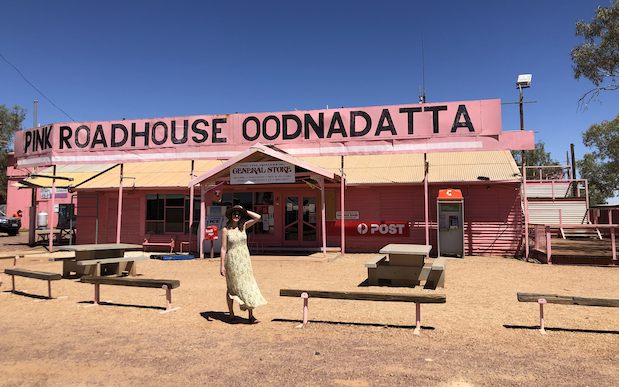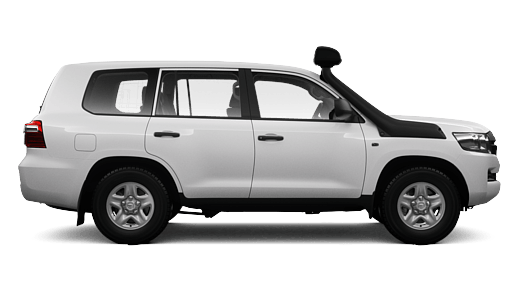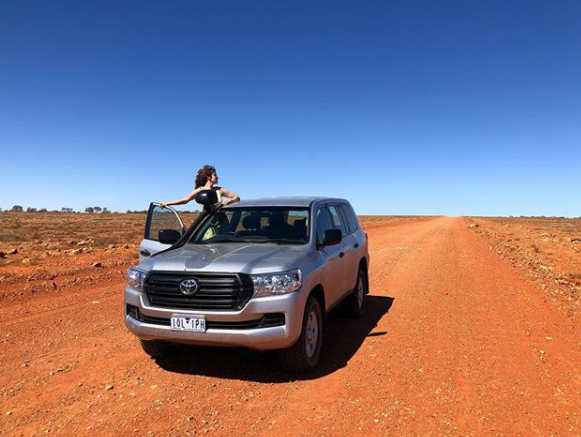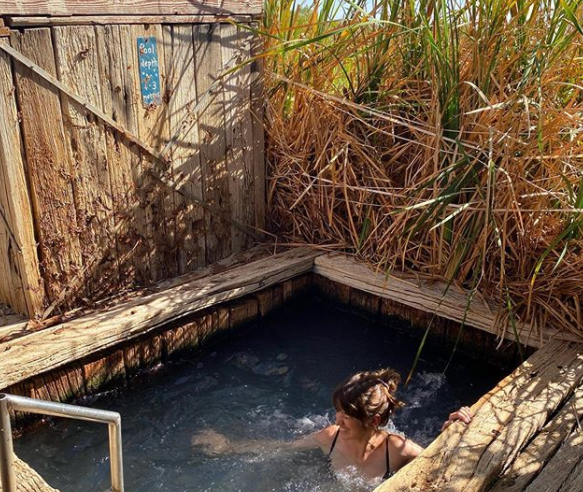
I am not a pro at 4WD stuff, by which I mean I don’t have one of those fancy two-way radios or whatever, or a giant antenna on my car. I don’t have a huge interest in dune-driving or going through water in a car, but what I do love is a good off-road adventure.
I’m talking roads that are for the most part more of an unsealed situation than a full on rocky ride. The hardest 4WD track I’ve done so far is the Bungle Bungle ranges, which at the time was bumpy as hell but manageable.
Right before lockdown, I went on a beauty of a South Australian adventure, driving from Adelaide up to Alice Springs in the NT, then back down by way of the Oodnadatta Track. You’ve absolutely heard of Oodnadatta, probably in that tune “I’ve been everywhere, man”. It’s a long, dusty 620 kilometre road running from Oodnadatta down to Maree, and it’s a bucket list hit for most 4WD enthusiasts.
For me, the appeal was red dirt for days and tiny towns with populations of 5. People do live on the Oodnadatta Track, and the grub you can cop at the roadhouses and pubs is top-notch.
Keen to hit it? Here’s my guide.
1. Have The Right Vehicle
This is not a time to take your cute lil’ city car for a spin – while the Oodnadatta Track is relatively flat, rainfall can turn it into bog city. Not to mention that, while it’s regularly maintained due to its popularity, being so remote you simply can’t predict it’ll be 2WD friendly at all times.
I borrowed a Toyota Landcruiser 200 GX for the trip, which is this bad boy:

It was super comfy, roomy and most importantly – built for this kind of road. Here’s me doing a full photoshoot on the road, as you do.

While we never needed to use that snorkel bit, we 100% needed the other 4WD benefits of the Landy. For example, the Landcruiser 200 GX has a 138 litre petrol tank. That’s massive, but you need something with a dece petrol tank to make it between towns on a road like the Oodnadatta Track. This model also had something called Multi Terrain Select, which meant we could specifically choose the type of conditions we were driving in, and would adjust accordingly, and Electronic Brake-force Distribution which meant when we hit the brakes, the wheels that needed to brake hardest according to the conditions would do more work.
All that fancy stuff is basically just tech in the Landcruiser 200 GX that’s been put there because the car is designed for roads like the Oodnadatta Track, or even more intense driving. And I think that’s something to be mindful of – this isn’t a long, sealed highway you’re smashing out, it’s an unsealed road that’s unpredictable. While you might be lucky in a 2WD, you could easily get stuck if the conditions turn – and given you’re super remote, that is not a bueno situation to end up in.
In fact, we were told a story in William Creek about a couple who got their 2WD campervan bogged, and were stuck in the middle of nowhere for DAYS due to floods. Food and water had to be airlifted in to them. No thanks.
2. Prep Yourself
You know how I mentioned that 138 litre petrol tank? You’d best believe we filled that bad boy up before we even began the Oodnadatta Track. I cannot stress this enough, do not wait for your fuel to be near empty before getting a refill. Ever. Whenever you hit a town, just top it up. You never know when the next petrol stop will be.
It’s also a wise idea to have a great first aid kit (we had a camping kit which included stuff like snake bite gear and so on) and always carry water. My suggestion is picking up a camping water tank like this one, filling it up before you leave and keeping it full just in case. Again, do not mess around with the remoteness of the Oodnadatta Track. If you get stuck, you might be waiting a while for help – and outback conditions can be intense. Look at this example:
It’s also worth learning about you vehicle before you go. For example, the Landcruiser 200 GX we borrowed was pretty straight-forward in terms of how to switch terrain modes, which sensors we needed off/on – but we still sat in one of the main highway petrol station carparks for a bit and read parts of the manual that were relevant to the trip.
Whatever car you’re taking, make sure you read up on things like how to turn the 4WD controls off/on, where the replacement tyre is, and whether there are certain modes you need to activate before driving for a long period on an unsealed road.
You may also need to let air out of your tyres – again, this should be in your manual. Basically, don’t just go in blind. Prepare yourself, even if you’re feeling confident.
3. Plan Your Accom Ahead
There are some seriously fun accommodation options on the Oodnadatta Track. For example, we stayed in William Creek, around halfway along and pretty much consisting of one hotel, a campground and a few houses where the 5 (!!) residents live. There’s a nearby cattle station that is MASSIVE, and the folks who work there popped in and out of the pub as we ate dinner and had a few beers.

Accom wise, don’t expect anything fancy. This is trademark outback pub-adjacent stuff. We had single bed dongas- like demountables with ensuites, nothing fancy but with reverse cycle air con and comfy mattresses. Since you’re driving in of an arvo and out of a morning, you really don’t need anything fancy anyway. And honestly, the William Creek Hotel was one of the best stays of our trip – the adjoining pub was a total outback vibe, and manager cooked us and the other guests a ridiculously good goat curry. Don’t knock it ’til you try it.
But you need to book ahead – you could theoretically roll in and suss a room, but if you’re unlucky you’ll be sleeping in your car – most of the towns along the Oodnadatta have one, maybe two places you can stay. If you’re hitting the road in high season, you’ll be sorely disappointed if you just wing it.
4. Prep Some Snacks, But Get An Oodnaburger For Lunch
You can definitely pick up snacks along the way on the Oodnadatta Track, but you’ll be limited as to what you can have. So it’s a good idea to pack an esky with some ice bricks and a bunch of stuff to eat before getting on the road.
However, if you’re a meat-eater I IMPLORE you to have an Oodnaburger for lunch at Oodnadatta’s famous Pink Roadhouse. You need to stop in here anyway, not only is it a sight and a half, but you’ll likely need that petrol top up.

The Oodnaburger is basically a giant Aussie burg, and while you might be surprised considering you’re in the middle of nowhere at one of only a handful of restaurants, it’s bloody delicious. An absolute must-eat, I reckon.
5. Take It Easy & Enjoy The Ride
There’s two reasons I say this. Firstly, it’s really important you don’t go all speed demon on the Oodnadatta Track, because while unsealed roads can be cruisy once you’re used to them, at any point something could go down that’ll see you slam on the brakes. Fancy car stuff like Electronic Brake-Force Distribution will help you in scenarios like that, but if you’re driving recklessly it can only help you so much.
Don’t speed, don’t take corners fast, keep your wits about you and never, ever drive at dusk or dawn in the outback. Animals are everywhere out there at those times! Trust me, I’ve hit a few in my road trips even outside of the scary hours (RIP).
But also, there’s heaps to check out along the route – if you just speed through, you’ll miss so much. There’s a weird art installation on a farm (you’ll spot it on the road). You could take a wild scenic flight with Wrights Air from William Creek and check out Lake Eyre and – my personal fave – the Maree Man:

It’s also worth stopping in at spots like Dalhousie and Coward Springs for a dip. Here’s me at Coward Springs, in the tiniest – yet most refreshing – natural spring ever.

Basically, don’t just do Oodnadatta Track for the bucket list tick – get into it. Hit up the spots along the way, you won’t regret it.







